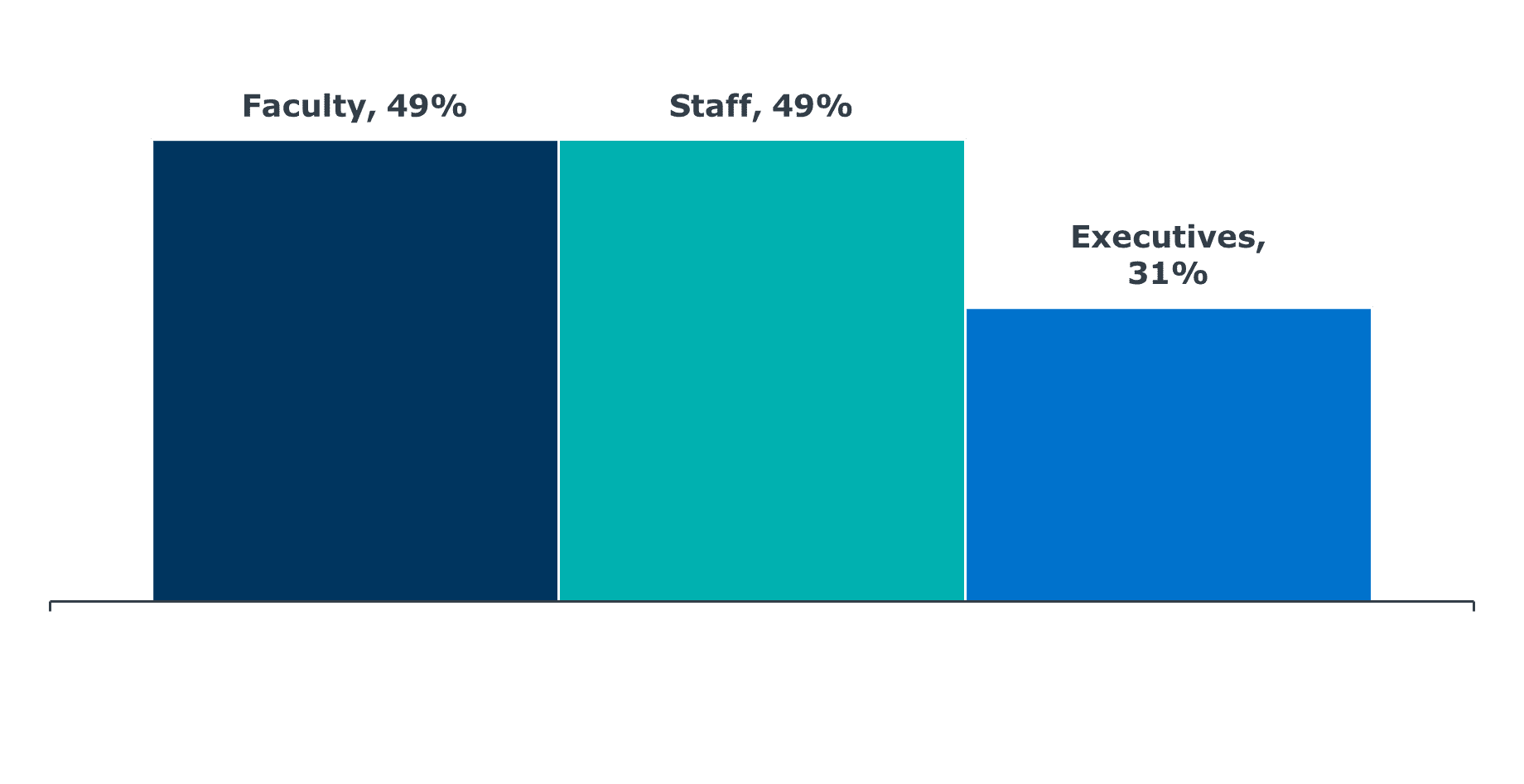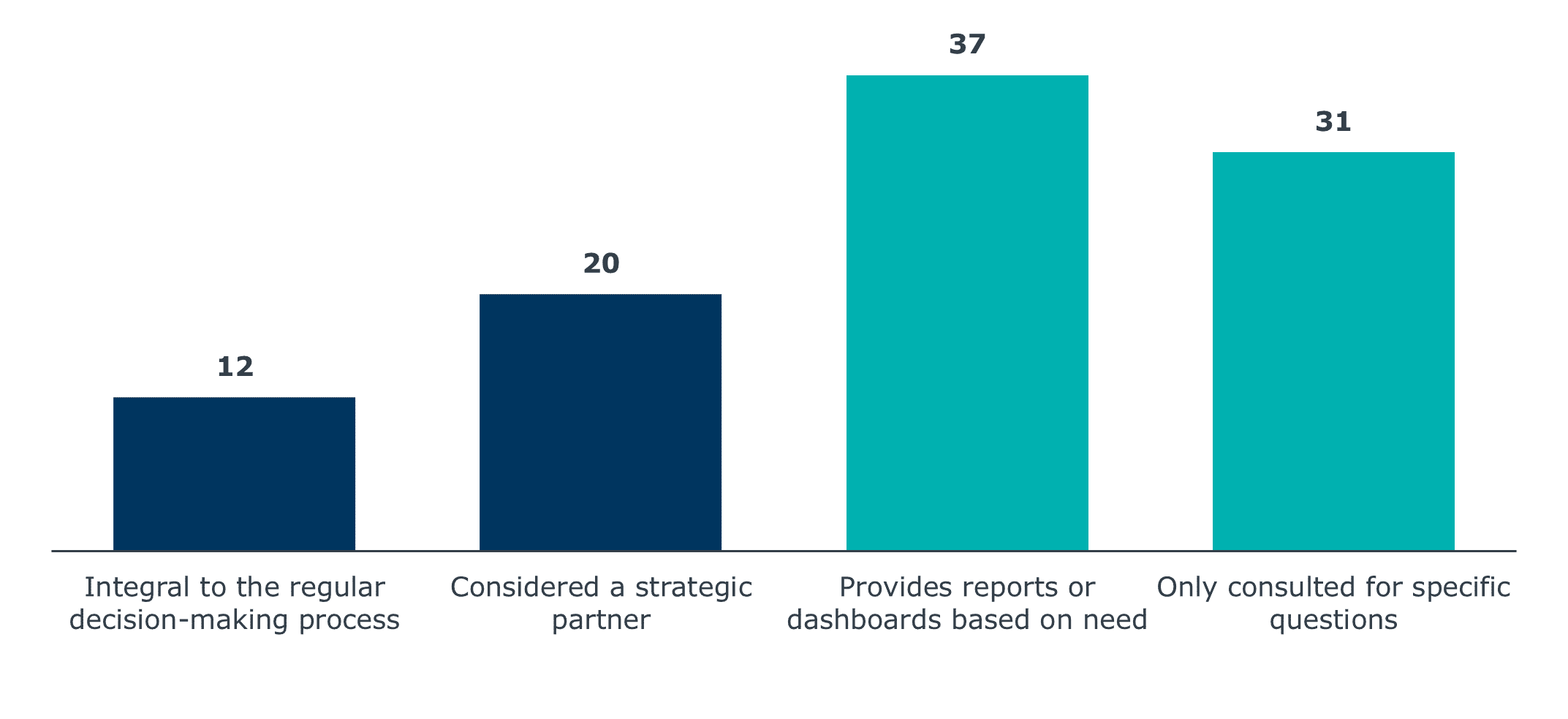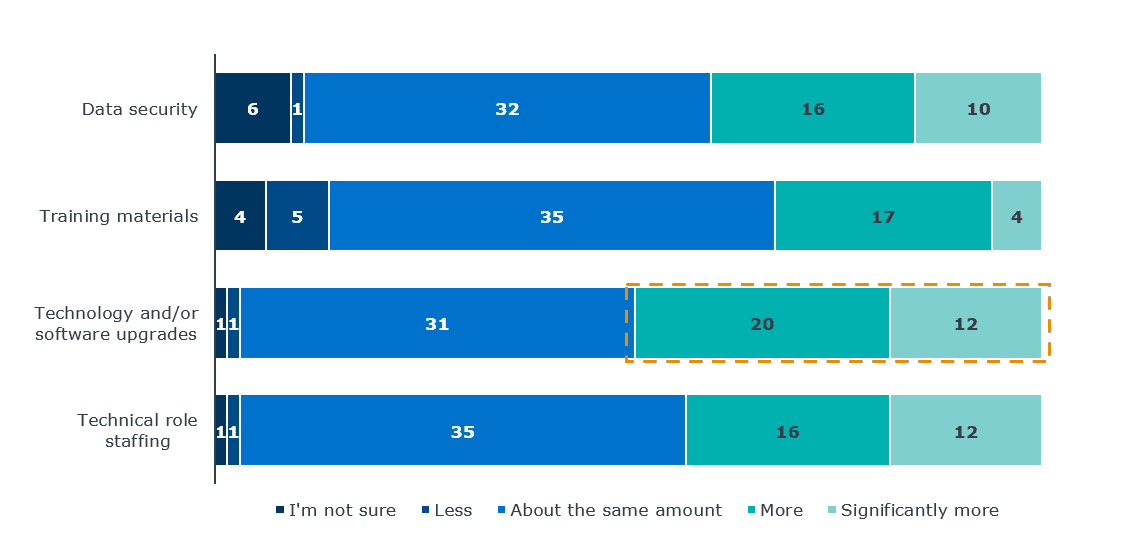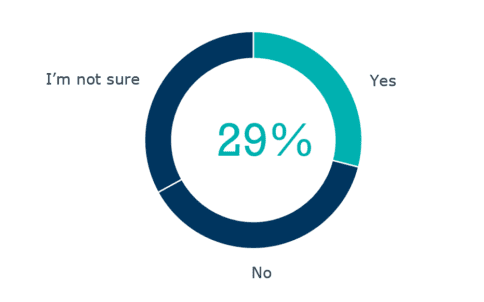The 4 most common barriers to higher ed data and analytics success
Results from our recent survey of higher ed leaders
December 7, 2022, By Earl Sires, Strategic Writer
I recently facilitated a survey of higher ed leaders to understand their data and analytics goals and pain points. The survey results made clear that leaders consider data critical to the most fundamental priorities at their institutions, such as enrollment, retention, student success. In each of those cases, over 9 in 10 respondents saw data and analytics as important to finding success.
I also found it noteworthy that institutions face the same data and analytics challenges as their peers-and are looking for ways over these hurdles. In this blog post, I gathered insight from EAB experts on how to resolve the most common challenges the survey uncovered.
Read on to see survey results and advice on how to overcome four barriers to data and analytics success.
1. Faculty and staff can’t access trustworthy data
A critical first step in applying data is having reliable access to data you can trust. In our survey, nearly half of respondents reported that their faculty and staff cannot easily access reliable data.
“_____ on my campus cannot easily access reliable data.”

At many institutions, data is siloed, accessible only to staff within that department. Even at institutions where data is more widely accessible, a lack of standard data entry protocols and storage procedures leads to lower trust in institution-wide data, creating de facto silos where teams or individuals keep their own data and guard access to it. The result is data request bottlenecks, conflicting numbers, and mistrust of the data as each employee or department works from their own data source, rather than from a single source of truth.
How to overcome this barrier: centralized data and self-service analytics
An important first step to overcoming this barrier is to unite your campus data in a single, trusted warehouse. When data is stored in varied systems that use different codes and prevent access from outside the department, siloes are a natural outcome. When data lives in a single system and uses codes that anyone can understand, data comes to be seen as an institutional asset rather than a departmental or individual resource.
Next, creating a self-service analytics infrastructure opens data access to a wider range of stakeholders at your institution, enabling front-line staff and faculty to improve day-to-day decisions. For example, a student success counselor will be more effective in their work if they can access an up-to-date list of students to contact and offer academic assistance. When that counselor can access a list that automatically updates with the latest data, the barrier to action is significantly lowered.
Remember: widening analytics access does not mean opening all data to all staff. Regulating access is just as important as creating it. Ensure that your institution follows documented data governance protocols and protects data privacy.
FIND AND FIX THE GAPS IN YOUR INSTITUTION’S DATA STRATEGY
2. Schools lose institutional knowledge when staff depart
The longer a staff member works in their role, the more crucial institutional knowledge they accumulate or create. When staff members retire or otherwise leave the institution, managers often scramble to record as much knowledge as possible in the weeks before they depart. A lack of standard, documented data entry procedures, storage locations, and code definitions can lead to frenzied calls to a former employee weeks or months after their departure.
31% of survey respondents said that institutional knowledge loss due to staff turnover is their most concerning data issue (of the four options we offered in the survey). Another 32% said the same about staff training and expertise, which goes hand-in-hand with institutional knowledge loss, as poor documentation creates a lack of continuity when onboarding new employees or training existing staff on data protocols.
Which of the following issues do you consider to be the most concerning?

How to overcome this barrier: documentation
Documentation is key to retaining institutional knowledge despite staff turnover. Start with these steps:
- Track data lineage to ensure end-users know where data came from before it arrived in their report.
- Facilitate onboarding by recording training sessions and creating templates for onboarding processes.
- Create data dictionaries to define codes and fields in your databases and systems.
- View data dictionaries as living documents; make time for regular review and updates.
Despite the scope of these undertakings, they have immense benefit, and with a methodical process, these changes are more in reach than you might think.
LEARN WHY DATA DEFINITIONS AND GOVERNANCE MATTER FOR UNIVERSITY STRATEGY
3. The Cabinet has an opportunity to work more strategically with data professionals
Professionals trained to analyze data are immensely valuable, and many universities underutilize their analytics staff’s expertise. Our survey found that the relationship between Institutional Research (and/or Institutional Effectiveness) tends to be transactional, where the Cabinet requests a specific answer, report, or dashboard from IR, and IR satisfies the requests. In this arrangement, the Cabinet is not partnering with its data professionals in a strategic, ongoing way, but on an ad hoc basis. As a result, IR often does not have complete context for the request, leading to missed opportunities for IR to provide additional analysis that could further the Cabinet’s goals.
How does Institutional Research (or Institutional Effectiveness) interact with your institution’s Cabinet?

How to overcome this barrier: elevate IR’s role
Give your IR Director a seat at the Cabinet’s table and make them a regular part of the strategic decision-making process. If that’s too big a step for your institution, start by letting IR listen in on Cabinet meetings. Often, an existing report or dashboard IR created to serve another purpose can provide unexpected insight into a question the Cabinet is wrestling with. IR can only provide that information when it is aware of the conversations happening at the highest levels of the organization.
READ MORE: Staffing Your Analytics Function
4. Technology investments are high priority-and high risk
New technology investments are high on the list of leaders’ priorities for the coming years. When we asked which areas survey respondents plan to invest in next year, “Technology and/or software upgrades” received the greatest number of responses indicating increased investment.
Over the next 12 months, do you anticipate that your institution will invest more or less in the following priorities (compared to current levels of investment)?

Institutions clearly intend to put attention and resources toward technology, but the survey also found that almost a third of responding institutions experienced a failed technology initiative within the last five years. This is a startlingly high number. Technology investments are typically costly and involve significant internal review and sign-off-especially enterprise technologies expected to affect key institutional metrics.
In the last five years, has your institution implemented data & analytics technologies that have not had an impact on your key metrics or delivered on their promise?

How to overcome this barrier: partner with experts
Partner with an industry specialist when making technology investments. Many vendors offer one-size-fits-all solutions that are built with industries of all types in mind. A higher education specialist (like EAB) understands the systems colleges and universities use each day and knows how to address the pain points. Partnering with a trusted organization can increase institutional confidence in your investment, leading to greater support from collaborators and beneficiaries.
LEARN ABOUT EDIFY-EAB’S DATA AND ANALYTICS PLATFORM FOR HIGHER EDUCATION
Conclusion
More than anything, our survey shows that higher ed leadership knows how important analytics are to achieving core institutional objectives. 99% of respondents said data was important or very important to retention efforts, and 97% said the same about enrollment. Leaders also understand the obstacles they face in reaching their analytics goals and are taking active steps to confront those challenges.
At the end of our survey, we asked leaders what they are excited to do with data this year. In response, one leader said, “I am excited to use the data we have to be more proactive in our work with students.” This leader summarized the most important role data plays in higher education: helping institutions serve their students better.

More Blogs

AI's environmental impact can't be ignored. What can higher ed do?

Can your LMS data predict which students will need support?
